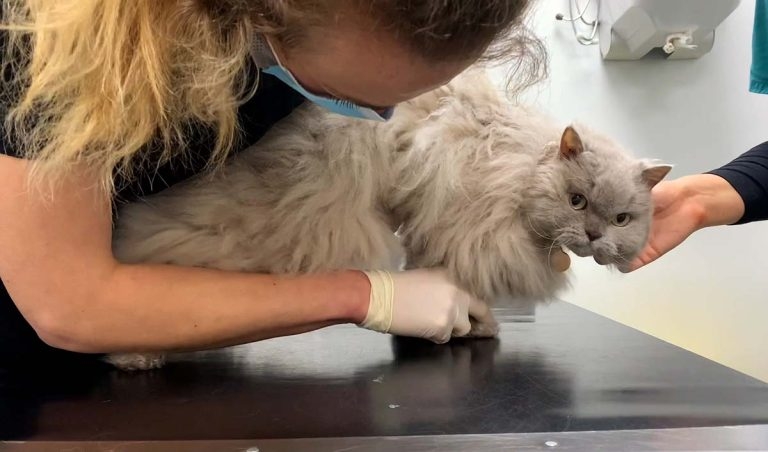5 Aug 2022
This video and article aims to visually accompany the article <a href="https://www.vettimes.co.uk/article/how-to-perform-a-neurological-examination-in-a-feline-patient/" target="_blank">“How to perform a neurological exam in a feline patient”</a> written by Mark Lowrie in November 2021.

While the basis of the neurological examination in cats and dogs is similar, some differences exist in how to perform and interpret its findings.
Cats are not small dogs – and it is particularly true for the practitioner wishing to do a neurological examination. We therefore thought that a video presenting the neurological examination of the cat would form a useful tool for veterinary surgeons. This video presents our method, but others may have different techniques.
Please note, this video does not have any audio.
The neurological consultation starts by taking a history – a crucial aspect of the work-up of a neurological case. This is a good time for the “hands-off” examination – allowing assessment of behaviour within the consultation room, the cat’s mentation and how they respond to their environment.
Opening the travel carrier allows the cat to explore, jump or hide. We pay much attention to the posture (for example, crouched, plantigrade, presence of neck ventroflexion, a head tilt or head turn, tail position), gait (for example, circling, ataxia, paresis) and facial features (for example, nystagmus, anisocoria, strabismus, asymmetry of the face).
We aim to perform the “hands-on” examination starting with the least provoking tests. Some tests are considered to be unreliable in cats and could be dismissed in situations of poor patient compliance. It is good to separate clinical findings into those that are “certain” versus those that are “subjective or less compelling” to build a differential diagnosis.
Reliable postural reaction tests:
Less reliable postural reaction tests:
Reliable spinal reflexes:
Less reliable spinal reflexes:
Less reliable cranial nerves:
Presence of spinal pain is tested via neck and tail manipulation, and application of gentle pressure to dorsal and transverse processes of each vertebra. Many cats will respond to lumbar palpation or will just not tolerate spinal palpation. Therefore, the clinician must interpret carefully the result of spinal palpation and not give it too much weight in their clinical decision-making.
The final part of the examination involves the assessment of deep pain. To test this, a noxious stimulus – such as applying artery forceps across digital bones (and tail base if no response is obtained) – is performed to look for a behavioural response, such as vocalising or turning to bite. Withdrawal of the limb should be seen first and is a spinal reflex, and therefore not an indicator of presence of sensation. The test is positive when the cat turns towards the clinician in response to the painful stimulation.
Before jumping to the artery forceps, we should first use our fingers to pinch the toes as this may be sufficient to induce a response and avoid unnecessary painful tests.
It should be remembered that if the animal has voluntary movement then it will have deep pain sensation, too.